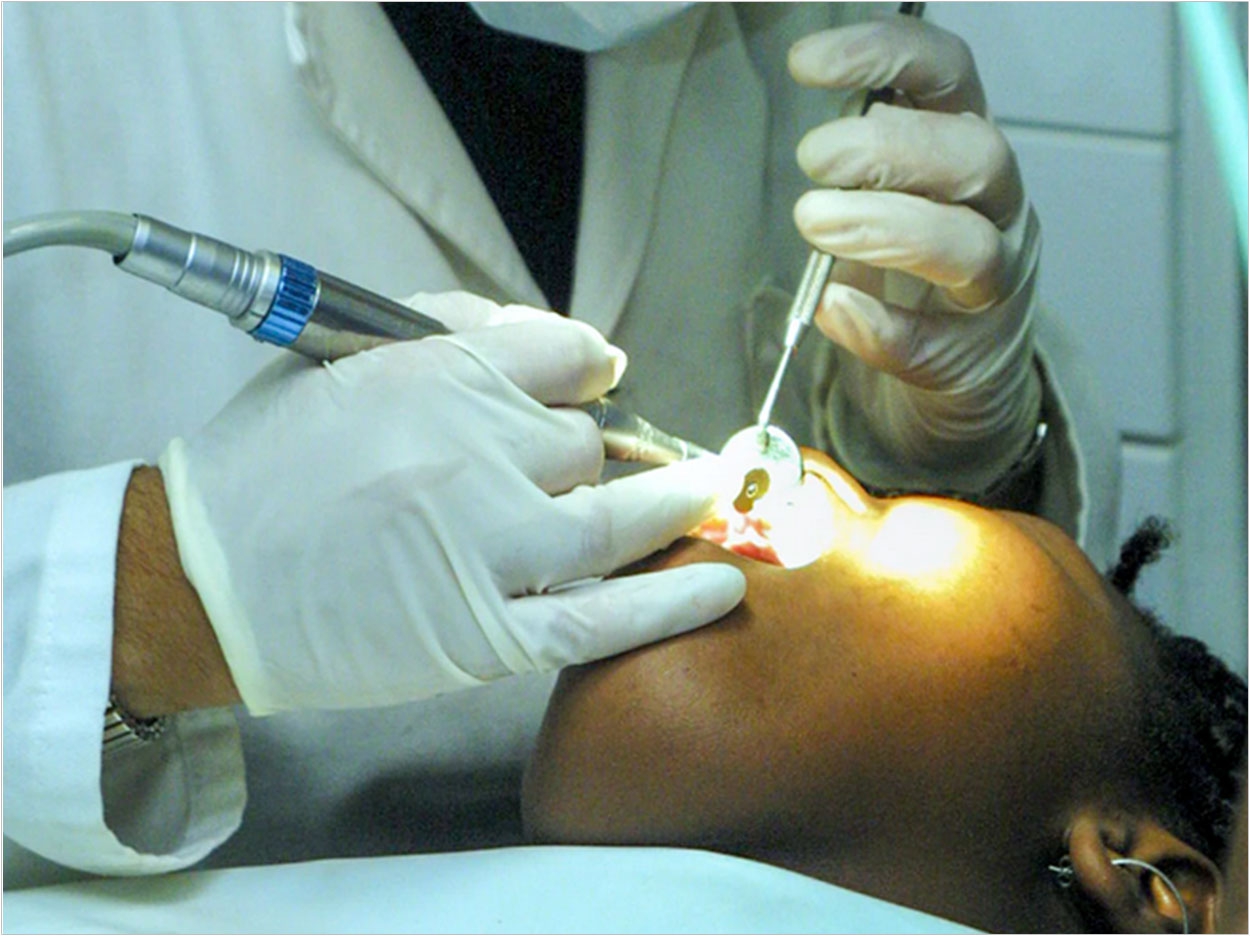
Researchers at the Ohio State University College of Dentistry say they have tracked the origins of microbiota in aerosols generated during treatments including ultrasonic scaling, implant osteotomy, and restorative procedures, proving that the risk of transmitting SARS-CoV-2 during these treatments is low.
The researchers collected samples of saliva and irrigant from 28 patients undergoing these procedures before each procedure began. Thirty minutes after the procedure, the researchers then collected condensate from the face shields of the operator and the assistant as well as from the patient’s bib and from an area 6 feet distant from the site of the operation.
The researchers then combined reverse transcriptase qPCR to identify and quantify SARS-CoV-2. They also used 16S sequencing to characterize the entire microbiome with fine-scale enumeration and source tracking.
The results show that it is possible to trace the source of contamination through DNA microbiome analysis and that the major source of microbes in aerosols came from the dental irrigant. Saliva did not significantly contribute, as infection control measures such as pre-operative mouth rinses and intraoral high-volume evacuation were used.
“Some species that live in your mouth can closely resemble those in water and the environment. Using this method, we don’t even have to know the names of these organisms. You can tell whether they are exactly genetically identical or genetically different,” said lead author Purnima Kumar, BDS, MS, PhD, professor of periodontology.
“If you use this granular approach to see these very nuanced differences in the genetic code, you can very accurately identify where they’re coming from,” Kumar said.
No matter the procedure or where the condensate had landed, microbes from irrigants contributed to about 78% of the organisms in aerosols, while saliva, if present, accounted for 0.1% to 1.2% of the microbes distributed around the room.
Salivary bacteria were detected in condensate from only eight cases. Of those, five patients had not used a pre-procedural mouth rinse. SARS-CoV-2 was identified in the saliva of 19 patients but was undetectable in aerosols in any of the cases. The contents of the spray mirrored what was in the office environment.
The findings are reassuring, Kumar said, but also make sense. Irrigant dilutes saliva by a factor of 20 to 200, Kumar said, and the research is validated by a 2020 study reporting a less than 1% positivity rate among dentists.
“Getting your teeth cleaned does not increase your risk for COVID-19 any more than drinking a glass of water from the dentist’s office does,” said Kumar.
The researchers concluded that the risk for transmission of SARS-CoV-2 and other respiratory pathogens from aerosolized saliva in dental operatories is moderately low and that current infection control practices are adequately robust to protect personnel and patients alike.
“Dental surgeons and hygienists are always at the forefront of the war against bacteria in the mouth, and they of course did not feel safe because they are front-line workers surrounded by aerosol,” said Kumar.
“Hopefully this will set their mind at rest because when you do procedures, it is the water from the ultrasonic equipment that’s causing bacteria to be there. It’s not saliva. So, the risk of spreading infection is not high,” she said.
“However, we should not lose sight of the fact that this virus spreads through aerosol, and speaking, coughing, or sneezing in the dental office can still carry a high rate of disease transmission,” said Kumar.
“Understanding the sources of microbial load in aerosols is important, not only for infection control in dental operatories during the COVID pandemic, but also to inform best practices in aerosol reduction, mitigation, and abatement in the long term,” said Nicholas Jakubovics, editor in chief of the Journal of Dental Research, which published the study.
“While further studies are needed with larger sample sizes, this study sets the stage for future work on risk of microbial transmission in oral healthcare settings,” said Jakubovics.
“These findings should help us open up our practices, make ourselves feel safe about our environment, and, for patients, get their oral and dental problems treated. There is so much evidence emerging that if you have poor oral health, you are more susceptible to COVID,” Kumar said.
Related Articles
CO2 Levels Can Be Used to Assess Air Quality in Dental Offices
OSHA Issues Guidelines on Workplace Ventilation
Three-Step Plan Improves Indoor Air Quality in Open-Space Offices












